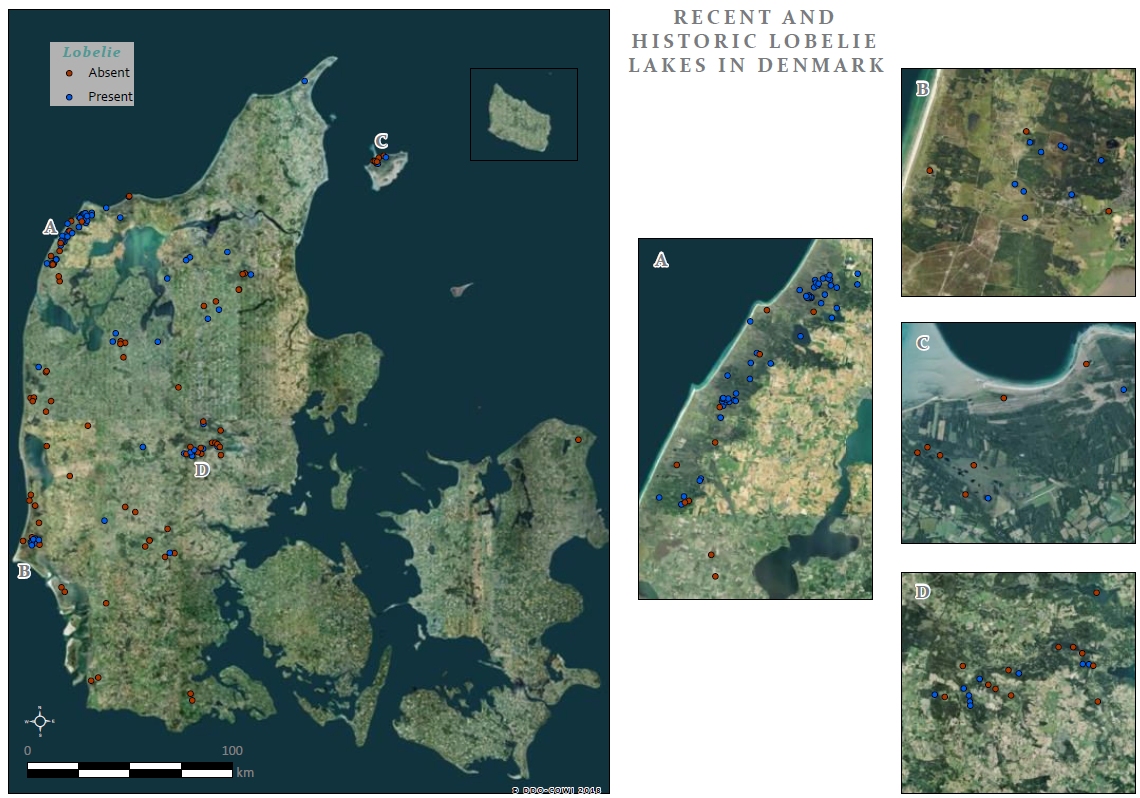Global and regional plant distribution
Precipitation, temperature and nutrients control the global distribution of terrestrial plants, but aquatic plants seem to follow different patterns. Water chemistry is important and novel analyses reveal exciting patterns of aquatic plant distribution controlled by the soil types of the catchment that subsequently influences the water chemistry - such as bicarbonate concentrations. Interestingly, bicarbonate only controls vegetation communities in lakes since these are often low in CO2 so that bicarbonate use becomes a competitive advantage. In streams however, that are typically high in CO2, the bicarbonate concentrations do not control plant distribution.
The map above was published in supplementary information in our recent Science paper where we report on the global distribution of submerged aquatic plants. See more about this paper here.
Water lobelia in Danish lobelia lakes
Lobelia lakes are probably the most common type of lake in Scandinavia – but it is rare and highly threatened in Denmark due to eutrophication and climate changes. A current project aims at mapping the remaining populations of Lobelia dortmanna and relate these to soil types, land use and present water chemistry. It is possible that the last decades of extensive reduction in nutrient pollution has resulted in recurrence of L. dortmanna in lakes where it had otherwise disappeared. We are lucky to have vegetation data from around the turn of the last century, i.e. 1900 to 1930, from the mid 1970 to 1995 and now again some more recent data so that we can address the question above and hopefully show that it is worth investing in reduction of the nutrient pollution.


